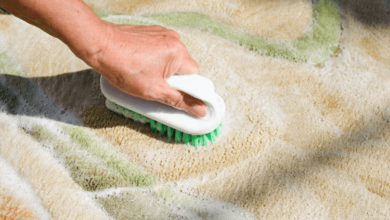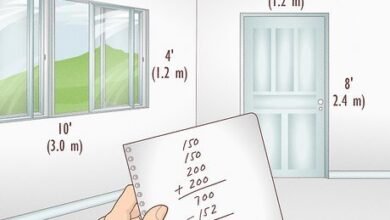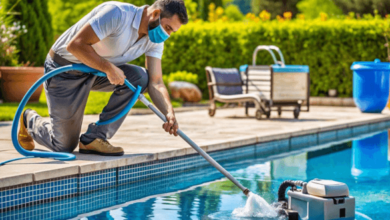The Hidden Costs of DIY Asbestos Tile Removal (And When to Just Seal Instead)

If you’ve discovered asbestos tiles in your home, your first thought might be to rip them out yourself. After all, DIY projects can save money, right? Unfortunately, asbestos removal isn’t like replacing flooring or painting walls. The risks (and hidden costs) can far outweigh the benefits.
In this article, we’ll break down the real expenses of DIY asbestos tile removal, from health hazards to legal fines. We’ll also explore a safer, cheaper alternative: sealing tiles instead of removing them, so you can have a comfortable environment to play games in and wind down at https://22bet.co.zm/ online with your friends!
Why Asbestos Tile Removal Is Dangerous
Asbestos was once a popular building material because of its durability and fire resistance. Yet, we now know that disturbing it releases tiny fibers into the air, and when inhaled, this can cause serious lung diseases, including cancer.
Health Risks
● Long-term illness: Asbestos exposure can lead to mesothelioma, asbestosis, and lung cancer, sometimes decades later.
● Immediate exposure: Without proper safety gear, you and your family could breathe in harmful fibers.
● Contamination: Fibers can stick to clothing, furniture, and HVAC systems, spreading the danger throughout your home.
Legal and Insurance Problems
Many states require licensed professionals to handle their removal. If you do it yourself:
● You could face heavy fines for improper disposal.
● Your home insurance may not cover related claims if it wasn’t done professionally.
● Future home sales could be affected if cross-contamination is discovered.
The Hidden Costs
At first glance, doing it by yourself seems cheaper than hiring a pro. But when you factor in all the hidden expenses, the costs add up fast.
1. Safety Equipment Isn’t Cheap
Proper renovation requires:
● Respirators with HEPA filters ($100+)
● Disposable coveralls ($50+)
● Heavy-duty plastic sheeting and duct tape ($30+)
● Specialized waste bags ($20+)
If you skip this gear, you risk exposure. If you buy it, you’re already spending hundreds—and that’s before disposal fees.
2. Testing and Disposal Fees
● Lab testing to confirm asbestos (200–200–500)
● Licensed disposal sites charge by weight, often hundreds of dollars.
● Some states require air quality testing afterwards (300–300–800).
3. Time and Stress
It isn’t a weekend project. You’ll need to:
● Seal off the work area completely.
● Wet tiles to minimize dust (dry removal is extremely dangerous).
● Carefully bag and transport waste to an approved facility.
Mistakes can lead to recontamination, meaning you’ll have to pay for professional cleanup anyway.
When Sealing Is the Smarter Choice
Instead of extracting affected tiles, encapsulation (sealing them) is often safer and more cost-effective. Here’s why:
How Encapsulation Works
● A sealant (like epoxy or vinyl tile adhesive) is applied over the tiles, locking fibers in place.
● No fibers are released, so no health risk.
● Far cheaper than removal—often under $2 per square foot.
When Should You Seal Instead?
✔ Tiles are in good condition (not crumbling or damaged). ✔ You’re installing new flooring (you can often lay new floors over sealed asbestos tiles). ✔ Budget is a concern (sealing costs a fraction of professional removal).
When Removal Is Necessary (And How to Do It Safely)
While sealing is often the best option, removal may be needed if:
● The tiles are severely damaged.
● You’re doing major renovations that require subfloor access.
● Local laws demand itbefore selling the home.
Hiring a Professional: What to Expect
● Costs: 5–5–20 per square foot (varies by location).
● Process: Professionals use negative air pressure systems, HEPA vacuums, and proper disposal methods.
● Peace of mind: No legal risks, no health hazards, and proper documentation for future home sales.
The Emotional Toll
One cost that’s often overlooked is the mental and emotional strain of handling asbestos yourself. Unlike other home projects, it carries a constant, nagging worry: Did I do this safely? Could my family be at risk?
Even with precautions, doubts linger. Every cough or unexplained ache might make you wonder if you were exposed. If you have kids or pets, the stress multiplies, fibers can cling to shoes, toys, or fur, spreading invisibly through the house. And if you later learn you made a mistake (like using the wrong filter or tearing a protective suit), the guilt can be overwhelming.
Hiring experts lifts this burden. Certified abatement crews carry insurance, follow strict protocols, and provide documentation proving the job was done safely. That peace of mind is worth every penny, because no savings are worth sleepless nights wondering if you endangered the people you love.





